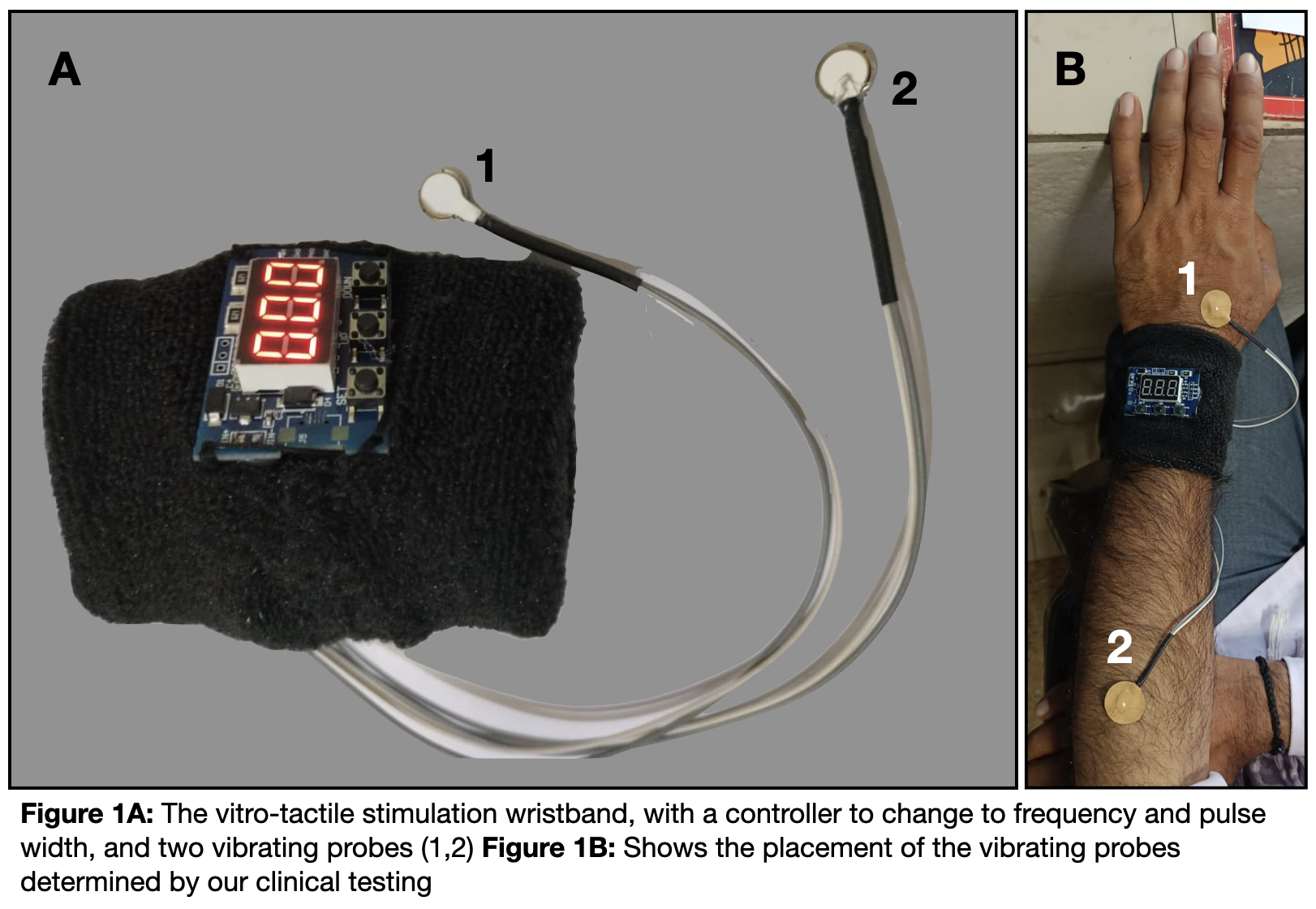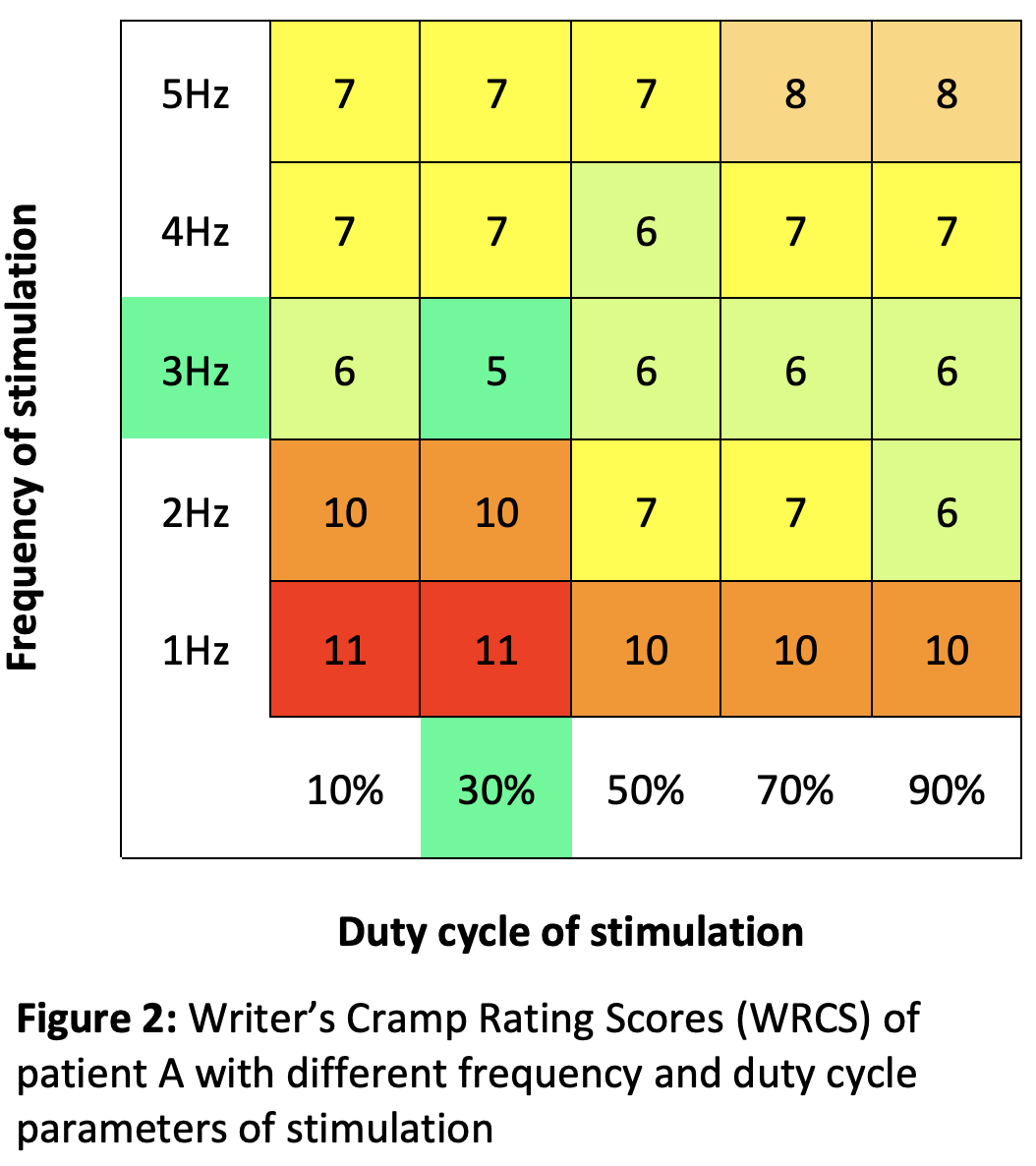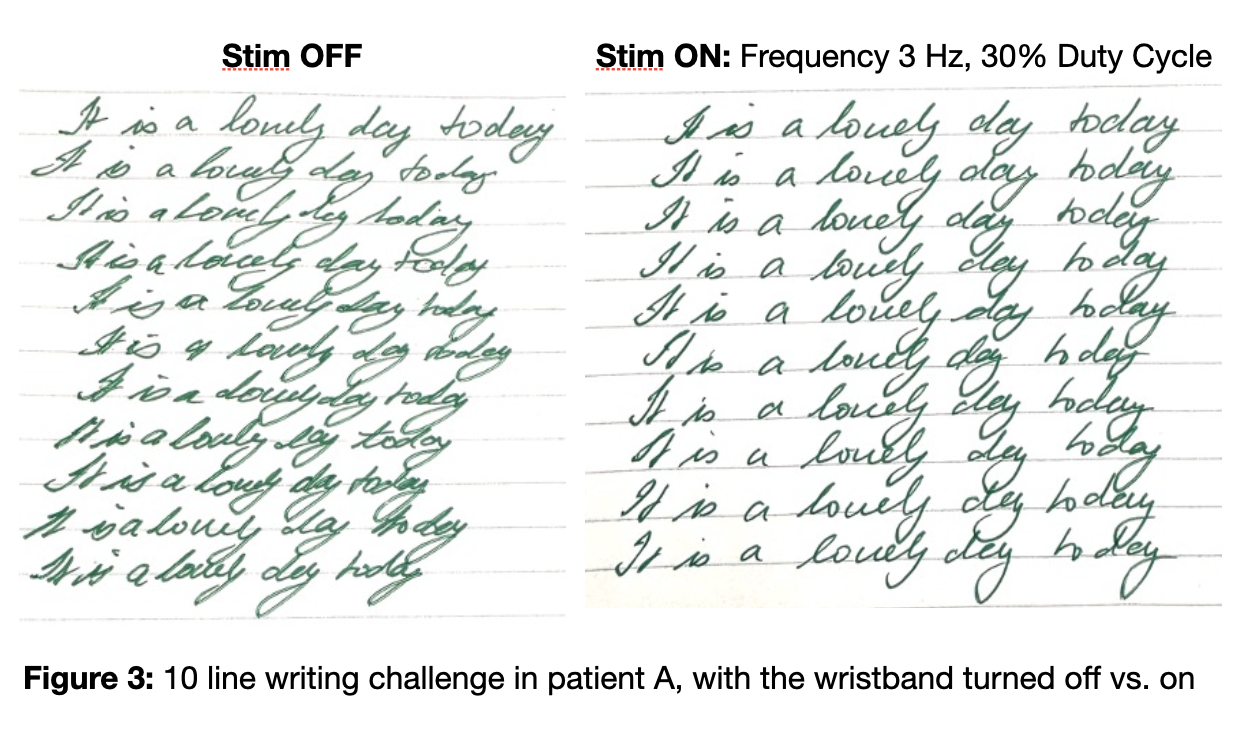Category: Dystonia: Clinical Trials and Therapy
Objective: To design and develop a wristband that provides vibro-tactile stimulation as a sensory geste/trick for patients with FTSDs. The device will offer different frequencies and duty cycles (pulse width) of stimulation. Further, to determine the optimal frequency and duty cycle settings for the vibro-tactile stimulation device through empirical investigation.
Background: Focal task-specific dystonias (FTSDs) are characterised by involuntary muscle contractions in a specific body part, triggered by a specific action or task [1]. Oral medication for FTSDs include trihexyphenidyl, primidone, baclofen, and phenytoin which may have intolerable side effects [2-4]. Chemodenervation with botulinum neurotoxin (BoNT) is currently considered as the standard treatment for FTSD [5-7], but the high cost continues to act as a barrier to entry for patients in developing countries [8]. Individuals with FTSDs may use a sensory trick/geste which provides proprioceptive stimuli to alleviate their dystonic symptoms [9].
Method: To deliver this sensory geste, we developed a wristband with two vibrating probes [figure 1]. The output frequencies and duty cycle of this vibratory stimulus could be changed. The optimal placement of these probes was determined in clinical testing. Patients of FTSD which had a sensory trick to ameliorate symptoms were included.
Patient A (right handed) was a 24 y/o female with writers cramp, patient B (right handed) was a 39 y/o male with a dystonic tremor in his left hand. See table 1 for detailed history. The stimulation alternated between two frequencies every 5 min to overcome sensory habituation. In order to asses the response; for patient A, a 10 line writing challenge and video based Writer’s Cramp Rating Scale (WCRS)[10], and for patient B, a left handed Archimedes spiral was used.
Results: For patient A, baseline WCRS was 11. There was a 54.5% reduction in WRCS at 3Hz frequency, pulse width 110ms (30% duty cycle) [figure 2]. A significant difference was also observed in the 10 line writing challenge [figure 3]. For patient B, a significant improvement in the left handed Archimedes spiral was observed at 5Hz with a pulse width of 100ms (50% duty cycle) [figure 4].
Conclusion: Our clinical testing demonstrated a significant reduction in dystonic symptoms in both patients, highlighting the potential of this non-invasive and cost-effective alternative to BoNT therapy.
References: 1. Stahl CM, Frucht SJ. Focal task specific dystonia: a review and update. J Neurol 2017;264(7):1536–41.
2. Jabusch HC et al (2005) Focal dystonia in musicians: treatment strategies and long-term outcome in 144 patients. Mov Disord 20(12):1623–1626
3. Jankovic J (2006) Treatment of dystonia. Lancet Neurol 5(10):864–872
4. Balash Y, Giladi N (2004) Efficacy of pharmacological treatment of dystonia: evidence-based review including meta-analysis of the effect of botulinum toxin and other cure options. Eur J Neurol 11(6):361–370
5. Hallett M et al (2013) Evidence-based review and assessment of botulinum neurotoxin for the treatment of movement disorders. Toxicon 67:94–114
6. Lungu C et al (2011) Long-term follow-up of botulinum toxin therapy for focal hand dystonia: outcome at 10 years or more. Mov Disord 26(4):750–753
7. Mejia NI, Vuong KD, Jankovic J (2005) Long-term botulinum toxin efficacy, safety, and immunogenicity. Mov Disord 20(5):592–597
8. Zoons E, Dijkgraaf MGW, Dijk JM, van Schaik IN, Tijssen MA. Botulinum toxin as treatment for focal dystonia: a systematic review of the pharmaco-therapeutic and pharmaco-economic value. J Neurol 2012;259(12):2519–26.
9. Lagrand TJ, Almuwais A, Lehn AC. “Tricked” sensory trick: a geste antagoniste in functional dystonia. BMJ Case Rep 2022;15(7). https://doi.org/10.1136/bcr-2022-248779.
10.Wissel J, Kabus C, Wenzel R, et al. Botulinum toxin in writer’s cramp: objective response evaluation in 31 patients. J Neurol Neurosurg Psychiatry 1996;61:172–175.
To cite this abstract in AMA style:
S. Arjun, A. Singh, H. Singh, R. Jain, I. Ahuja. Development of a Vibro-Tactile Stimulation wristband for targeted therapy of Focal Task Specific Dystonias [abstract]. Mov Disord. 2023; 38 (suppl 1). https://www.mdsabstracts.org/abstract/development-of-a-vibro-tactile-stimulation-wristband-for-targeted-therapy-of-focal-task-specific-dystonias/. Accessed January 4, 2026.« Back to 2023 International Congress
MDS Abstracts - https://www.mdsabstracts.org/abstract/development-of-a-vibro-tactile-stimulation-wristband-for-targeted-therapy-of-focal-task-specific-dystonias/





